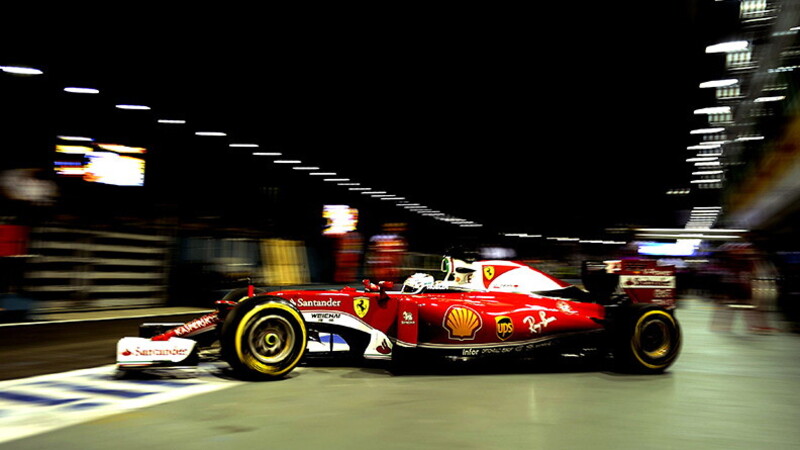Singapore: tales from another world

Monza, where the 13th race of the 2017 world championship has just been run, and Singapore's street circuit, which will host its grand prix on 17 September, are about as different as night and day. Quite literally. The numbers are clear. In Monza, the winning average speed was 243.6kph over the entire race: as recorded by Lewis Hamilton with Mercedes at the start of September. Between 2003 and 2006, the years that Formula 1 used a three-litre normally aspirated engine, the average was even higher. In Singapore however, one year ago, it was Nico Rosberg (again with Mercedes) who won the race at an average of ‘just' 159.9kph.
In Monza, the speed traps in all three sectors record top speeds of over 300kph (for the record, this year they were 338kph, 343kph and 321kph respectively). And the fastest lap of the race was set by Daniel Ricciardo in a Red Bull at 250.74 kph! In Singapore, by contrast, the fastest lap a year ago was run an average of 170.1kph. The Italian Grand Prix, with its never-ending straights punctuated by five corners and two chicanes, means that the cars take to the track with minimal downforce and hardly any wing angle: true missiles dedicated exclusively to the pursuit of raw speed. In Singapore, to have any hope of staying on the road and avoiding the omnipresent walls, the cars sprout a multitude of flaps and wings – with all these appendages designed to deliver that little extra bit of downforce that could make the difference between staying on the road and suddenly meeting the scenery. So, it's easy to see that Italy and Singapore present probably the two biggest consecutive contrasts on the 2017 F1 calendar. Furthermore, Pirelli's home race marks the end of the European season: formed of eight grands prix in total, compared to the 12 long-haul races that underline the truly global emphasis of the modern F1 schedule. The final push starts right now in Singapore, then continues in the Far East with Malaysia and Japan at the beginning of October, before heading to America with Texas and Mexico at the end of October. Finally, there is Brazil and Abu Dhabi on 12 and 26 November respectively. It's a finale that takes place all over the world, but it's also characterised by a huge variety in race conditions. Singapore, for example, is probably the closest that Formula 1 gets to replicating the myth of Monaco. There are tight corners, almost always at 90 degrees, and guardrails everywhere to punish any excesses of optimism on the part of the drivers. Only in very few places do the cars reach full speed, and there's just one real racing line because of the rubber that quickly forms and offers grip on the ideal trajectory. All this means that Singapore is a truly unique race. The slightest mistake can be punished by contact with the barriers and this frequently means an early bath. The physical fatigue of driving the cars here, with high temperatures even at night, make success in Singapore an even greater accomplishment.

And then there's the artificial light of course. These days action and overtaking under the lights is almost a normal facet of contemporary Formula 1. In Abu Dhabi, for example, the race gets underway in daylight, continues during sunset, and then concludes in darkness. Bahrain runs to a similar format. But in Singapore the darkness is constant from the beginning of the race all the way to the very end. An extremely powerful lighting system, designed by an Italian company, ensures maximum visibility over all parts of the track: where every single manhole, drain cover and white line; every single braking point assumes a special significance because of the omnipresent risk of going off. Under the lights that illuminate the track, as well as the flashbulbs going off in the grandstands, one of the most complex and fascinating races of the season is about to take place. Those unforgiving Asian barriers present a relentless challenge: one where a mere centimetre can make the difference between success and retirement.
Helping the drivers to thread the needle through Singapore's streets in their constant battle with grip and speed are Pirelli's P Zero Purple ultrasoft tyres. On this winding and glittering labyrinth, the softest of Pirelli's compounds makes an appearance for the seventh time this year. There will be three more outings for the purple tyre in 2017: in the United States Mexico, and Abu Dhabi. This confirms the fact that the new wide tyres (25% wider than before), have allowed softer compounds to be used in races this year: in fact, the softest compound has been used in exactly half of them. This is a considerable increase compared to previous seasons. And it offers potential for yet another new and dramatic reduction in the lap record at Singapore, just as has been the case at many other races up to now this season: the fastest ever seen in Formula 1.




